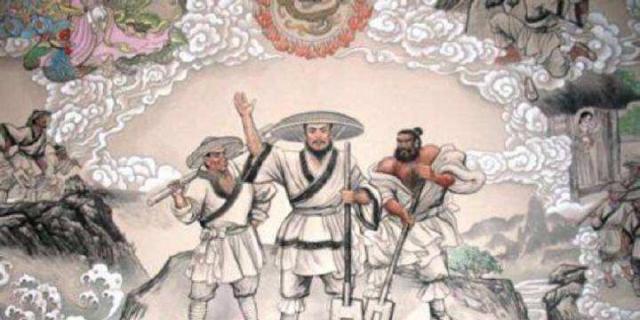
Chinese bronzes, which originated in the summer and flourished in the Yin Shang Dynasty during the Zong Zhou Dynasty, are more like some kind of symbol, representing some kind of secret that is difficult to explain. Most bronzes are related to three things, one is food, two is power, and three is etiquette.
The "Chronicle of History" has: "The Yellow Emperor mined the copper of the first mountain and cast it under the Jingshan Mountain." Ding is complete, with a dragon hanging beard, and the Yellow Emperor is greeted. There are also history books: "The Yellow Emperor made Baoding III." "It is said that the Yellow Emperor cast the three bronzes of the Heaven and Earth People. This is the beginning of bronze as a symbol of power.
But after bronze became a symbol of power, did it really get rid of the dining utensils? Of course not. In fact, even in the later Spring and Autumn Period and the Warring States Period, bronze ware was often used for catering. Between the three generations, bronzes were more used by the nobility.
The Yellow Emperor cast the Three Dings, dayu cast the Nine Dings, the so-called Nine Dings later represented the royal power, that is, with the Nine Dings, they had the status of the co-lord of the world, and after the "three generations moved", the new dynasty would always move the Nine Dings to the capital. Later, the Qin state seized Jiuding and wanted to travel thousands of miles to transport it away, which is the representative of this symbol of power.
Bronze to the Western Zhou Dynasty, in fact, has completed a certain symbolic transformation from "state" and "monarchy", the princes and states to dominate the Central Plains, most of them have to go to the Zhou King City to win the crown, Chu Zhuang Wang, Qin Wu King have this move.
One Wang Sunman said, "In Germany is not in Dingding." The side of the former Xia has virtue, distant pictures, tribute gold and nine pastures, casting ding elephants, and preparing a hundred things for them, so that the people know the gods and adulterers. The old people entered the River Zelin, and it was not a good thing. The charm of the fish, mo can meet it, use the energy to cooperate with the upper and lower levels, in order to inherit the heavens and rest", which means that the bronze has become a ceremonial vessel.
The history books have: "Let the people know the gods and adulterers", that is, casting bronze ware to let the people know the ghosts and gods, what charms, what demons and ghosts, can react on the bronze utensils. On many of the bronzes we see today, there are many vicious facial figures, like glamorous rays, which are chilling. It can be seen that this influence has always existed, and the Tianzi nobles thousands of years ago used this method to make the people feel deterred.
For xia merchants, food is the foundation. And man wants to eat, and God wants to eat. To some extent, the Shang King is an emissary sent by heaven and is responsible for managing the subjects of the world, and the subjects of the world are small, the Shang King is larger than the subjects of the world, and the gods are larger than the Shang King. So at that time, the bronzes cast at that time were very few in the folk, and even if there were small utensils, to the nobles and then to the Shang kings were large utensils. If the gods are bigger, they must forge larger instruments. Therefore, the bronze utensils we find today for sacrifice are often huge.
Among the nations, among the many cities and palaces, there are bronze utensils. In addition to the symbols of power, the important function of bronzes lies in their sacrificial activities. It is the Son of Heaven and the princes of the nations, whenever the sacrifice of gods and ancestors is held, a major bronze vessel will be placed on the altar, which can be described as a thousand years of inheritance, and even today's sacrifice activities are often used in abbreviated versions of the rituals.
Some scholars believe that "the temple can observe the strange people, and is displaying ceremonial vessels with many carved monsters on the vessels, symbolizing some kind of great god in the universe", and the name of the bronze ceremonial vessel is there. The so-called "ritual sacrifice, tianzi nine dings, princes seven dings, doctor five dings, three dings", as well as "tianzi eight gui, princes six gui, doctor four gui, shi two gui", that is, the rank is different, the ceremony is also different.
As a result, many words were often engraved on bronze utensils, and later a special gold script was formed. Bronze utensils, from the gods to the temple, from the temple to the people, inscribed on the bell ding, passed on to future generations. It is not only the times that are passed on, but also the culture of that era.